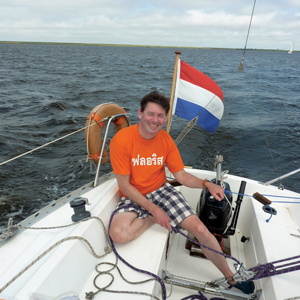 Challenges of floating wind
Challenges of floating windIf it is up to the European Commission, all the energy used will come from renewable sources by 2050. Achieving this goal will require the large-scale use of floating wind turbines. So far, the majority of offshore wind farms have been bottom-fixed; however, much of the world’s oceans and seas is too deep. In waters deeper than 50 metres, it becomes a technical and economic challenge to install bottom-fixed turbines. That is where floating wind comes in.
Floating wind is still in its infancy, but considering the potential market there is a lot of interest in it. During WindEurope in Bilbao earlier this year, I saw many floating platform concepts and, for now, it is difficult to tell which one will ‘win’, since I do not expect that they will all reach the commercial stage. It all depends on the design. The one that is suitable for all kinds of water and is capable of handling all the different waves and wind conditions has a huge advantage. Another key might be the manufacturing capacity. To lower the levelised cost of energy, mass production of the platforms is necessary, so the company that is able to scale up the production and perhaps realise local production near the wind farm sites has an advantage too.
Another issue with floating wind turbines is how to operate and maintain them. Floating wind farms will be located further away from the shore, so logistics and workability aspects will bring about extensive maintenance challenges. Furthermore, the dimensions of wind turbines are growing, which means that major components are going to be heavier and positioned at greater heights. The article on page 22 discusses the current state of O&M in floating wind, with a particular focus on major component replacement strategies. The article summarises year-long discussions held by the expert members of the World Forum Offshore Wind.
The European Commission has proposed to increase Europe’s offshore wind capacity from the current 12GW up to 400GW by 2050, of which one third is expected to be generated by floating wind turbines. A good example of the potential of floating wind is the ScotWind auction. At the beginning of the year, Crown Estate Scotland announced 17 winners with a total capacity of almost 25GW. Of these winners, more than 14GW will be floating wind projects. Other potential big markets for floating wind are Spain, France and Portugal in Europe and Japan and Korea in Asia. Since the offshore wind market in the USA is still in its early development phase, the focus for the time being will be on bottom-fixed.
Based on these figures the potential market is large enough for several players. Time will tell which ones become the top suppliers. We will keep you posted.
Enjoy reading,
Floris Siteur
Publisher
Publisher
